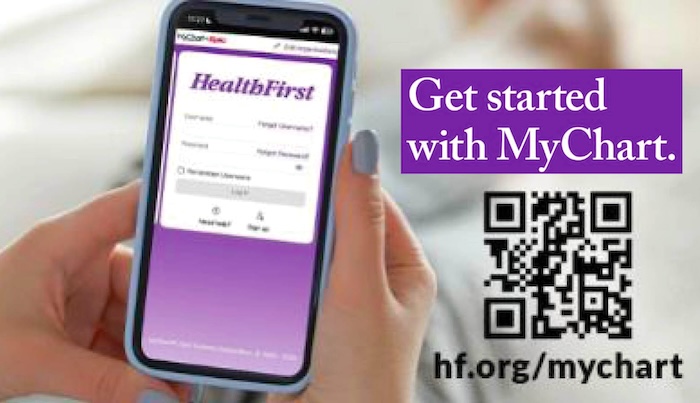Historic New Payment Model for Healthcare Services
By Dr. James Palermo // April 13, 2012
Value = Quality/Cost
(VIDEO: GHXchange)
BREVARD COUNTY, FLORIDA — As I write this, it appears that, after a very hard fought campaign, the GOP is ultimately lining up behind Mitt Romney to run against President Obama in November. With the rescue of our economy still the looming number one and most controversial issue of the campaign, negotiation over and proposed policy related to the debt ceiling, the deficit and taxes, and posturing on the part of both political parties to cast themselves in the best light for the 2012 elections will continue unabated until election day and beyond.

While the partisans haggle over the true state of the country’s economic status and the most effective approach to solving our fiscal problems, the true “elephant in the room” is a monetary crisis driven by health care costs that were 17.7% of Gross Domestic Product in 2011 and projected to be almost 20% by 2020. Of course, the fate of “Obamacare,” which will have either a negative or positive impact on the economy, depending on which partisan pundit is opining on it, is now in the highest court in the land. The United States Supreme Court is deliberating over a constitutional challenge to the Patient Protection and Affordable Care Act (PPACA) after hearing oral arguments in March, and a ruling is expected from the Court prior to the June 30, 2012 end of its term.
The Economic Imperative Is Healthcare VALUE
The American healthcare system has been maligned for as long as I can remember for having the highest per capita health care costs of any industrialized nation.
While much has been written and debated about what level of healthcare cost is too much for the U.S. economy to bear, many of the changes that will be made in the healthcare industry in the coming years will be based on maximizing the left side of the following equation: Value = Quality/Cost.
The historical foundation of payment for healthcare services in this country is a fee-for-service model. The prices charged by hospitals and doctors, and the actual payments they receive, have reflected a complex interaction of the social, economic and political forces affecting medical services.

During the last century, especially prior to the 1960s, it was not uncommon for the country doctor delivering a baby or attending to a farmer’s injury to be paid cash or a pork shank, with the physician often determining the price based on the patient’s ability to pay.
Today’s concerns about the medical payment system in the U.S. relate, in part, to the unprecedented scale and complexity of the modern system of medical payments. Our system is obviously much more complicated today because of the inclusion of “middle men,” such as employers, third party payers (insurance and HMOs), government regulators and attorneys, into the provider (hospital and physicians)-patient (now known as the healthcare consumer) payment equation.
Some of these changes have added value, but, unfortunately, despite this evolution, there has been relatively slow progress in maximizing the left side of the equation.
Pay-For-Performance
Over the last decade the concept of “pay-for-performance” has evolved and been embraced by the healthcare industry to drive value by improving the quality component of the equation.
Hospitals, which are much more easily regulated by the government than individual physicians, are mandated to report to the government their performance on managing specific high volume conditions, such as heart attacks, heart failure and pneumonia, compliance with practices to prevent surgical infections and the results of a standardized patient satisfaction survey. Performance scores are posted on the Hospital Compare website (www.hospitalcompare.hhs.gov) for consumers to review and compare hospitals, and to help make informed decisions.

Driven by Medicare reimbursement regulation, the government is taking the focus on performance to the next level in 2013, calculating a pay-for-performance (now named Value Based Purchasing [VBP]) quality score based on the performance being reported on Hospital Compare. The program is intended to help Medicare flex its muscles and move from being a passive bystander to an active purchaser of higher-quality healthcare.
Medicare’s former chief administrator, Don Berwick, points out that instead of a payment model that only asks the provider, “How much did you do for the patient?” this new model factors in the questions, “How well did you do, and how well did the patient do?”
The performance period used in calculating payment for 2013 started on July 1st 2011 and goes through March 31, 2012. Each hospital will have one percent of their total Medicare reimbursement at risk with that percentage increasing in yearly increments up to two percent in 2017.
The withhold of 1-2 percent of Medicare reimbursement may not seem like a lot of money to put at risk for hospitals, but, depending on Medicare volumes (Central Florida has some of the highest Medicare volumes in the country) it may be several million dollars. The total national withhold is estimated at over $850 million that will be used to reward improvement and achievement under the program.
Pay-For Perfection

Hospitals have the opportunity to not only “recover” that withheld reimbursement, but, if performing near the top of all hospitals, receive a bonus payment over and above the withhold dollars.
The benchmarks are high, and unless a hospital’s performance is better than at least 50 percent of the rest of the hospitals in the country, they will lose money. The prospect of this VBP program has driven hospital performance up dramatically, and I’ve redubbed this concept “pay-for-perfection.”

Because the measured performance is heavily dependent on physician practice preference and behavior in the hospital, to be successful it is imperative for the hospital medical staffs to be aligned with the hospital in striving for that perfection.
The Medicare VBP program for hospitals is, of course, just a first step in moving slowly away from an exclusively fee-for-service model of reimbursement.
Other important practice and outcome measures are scheduled to be added to the VBP quality score card over the next few years, and a Physician Compare website was launched in December of last year, as a first step in providing consumers with more information specifically about physician performance, including data about quality of care.
It is projected that, as the VBP model evolves, physician payment will also be affected by their compliance with proven best practices, and their patients’ outcomes and satisfaction.
Doing the Right Thing
It has been very consistently and clearly proven in healthcare industry studies that higher quality care results in more cost efficiencies, drastically driving the left side of the Value = Quality/Cost equation up.
Perhaps the most promising approach may ultimately depend on providers and payers partnering with patients to manage and be payed for care according to outcomes and cost across the continuum of healthcare settings. However, it remains to be seen if any transformational formula for payment of healthcare services in America can successfully address Medicare’s fiscal quandary and sustainability.
Nevertheless, moving away from the traditional fee-for-service and putting a laser focus on and rewarding providers for doing the right thing for the right patient at the right time, every time is a heck of a good start.
For more information about Value-Based purchasing CLICK HERE.













